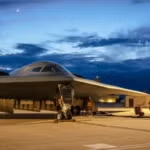
In light of the number of global threats and Russia's invasion of Ukraine and the ambitions of Russian President Vladimir Putin, the U.S. needs to bolster its allies on NATO's eastern flank with military technology and invest in systems that are affordable, numerous and survivable--such as drone swarms--and that are able to provide rapid information to forces that need it, House Armed Services Committee Chairman Adam Smith (D-Wash.) said on Feb. 24. The U.S. is facing threats to the world…














